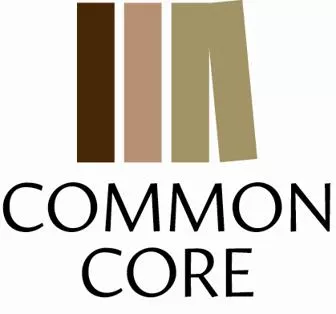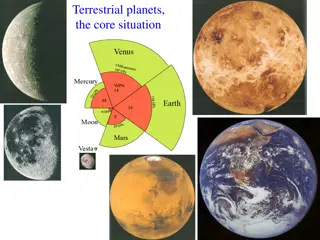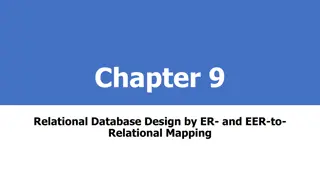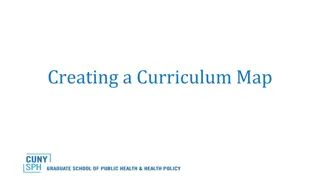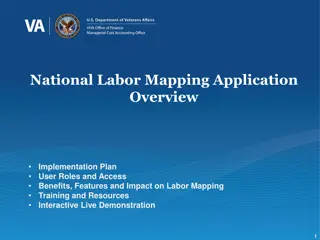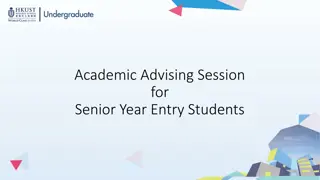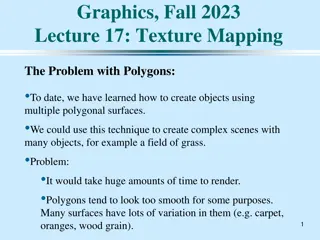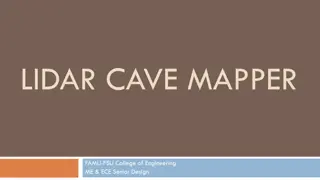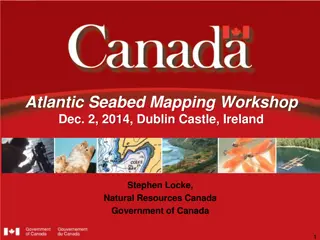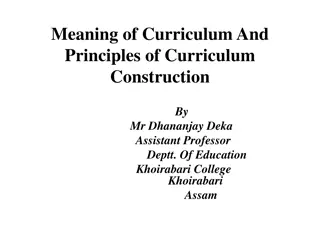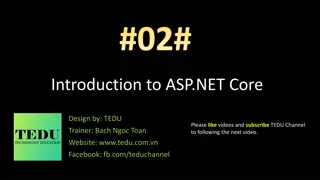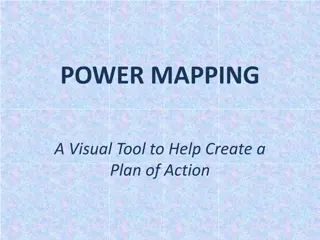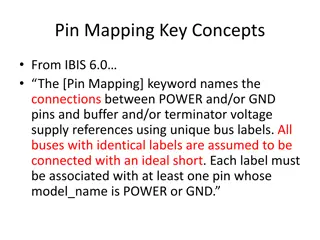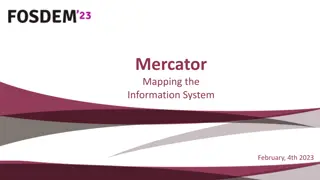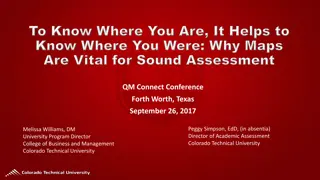Common Core Curriculum Mapping Project Overview
The Common Core is a non-profit organization founded in 2007 dedicated to preserving liberal arts and sciences in public schools. Through a dedicated board of education leaders and initiatives promoting challenging curriculum aligned with the CCSS, the Common Core aims to provide students with a comprehensive education. The organization has created curriculum maps in English Language Arts and conducted research to improve education standards based on successful global models.
Download Presentation

Please find below an Image/Link to download the presentation.
The content on the website is provided AS IS for your information and personal use only. It may not be sold, licensed, or shared on other websites without obtaining consent from the author.If you encounter any issues during the download, it is possible that the publisher has removed the file from their server.
You are allowed to download the files provided on this website for personal or commercial use, subject to the condition that they are used lawfully. All files are the property of their respective owners.
The content on the website is provided AS IS for your information and personal use only. It may not be sold, licensed, or shared on other websites without obtaining consent from the author.
E N D
Presentation Transcript
The Common Core Curriculum Mapping Project Lynne Munson, President and Executive Director
Here Today SHEILA BYRD-CARMICHAEL Project Coordinator and Lead Writer, Grades 9-12 Education policy consultant and former high school English teacher Member of the English language arts feedback group for the Common Core State Standards Led the American Diploma Project for Achieve
Here Today LORRAINE GRIFFITH Lead Writer, Grades K-3 A teacher for 22 years. Currently teaches 5th grade at West Buncombe Elementary School in Asheville, NC Co-author of eleven books on how to teach reading Common Core board member
What is Common Core? Common Core is a non-profit organization working to keep the full range of liberal arts and sciences in our public schools. Common Core was founded in 2007. Despite the coincidence of name, Common Core is not the same as the Common Core State Standards (CCSS).
Who We Are We have a dedicated board of education leaders: BARBARA BYRD-BENNETT, Chief Academic and Accountability Officer, Detroit Public Schools TONI CORTESE, Secretary-Treasurer, American Federation of Teachers PASCAL FORGIONE, Executive Director of the Center on K-12 Assessment and Performance Management at ETS. Former Superintendent, Austin Independent School Dist. JOY HAKIM, Author, A History of the US and The Story of Science
Who We Are We promote programs, policies, and initiatives at the local, state, and federal levels that provide students with challenging, rigorous core content. Most recently, we ve created content-rich curriculum maps in English Language Arts that align with the CCSS.
How Did We Come to Create the Maps? We conducted research finding that each of the nations that consistently outranks the United States on the PISA exam provides their students with a comprehensive, content-rich education in the liberal arts and sciences.
From Why Were Behind The following events are all connected to the Crimean War: 1. The Russian czar claims patronage over the Orthodox Christians in the Turkish Empire. Great Britain institutes military censorship. The Grand Alliance is formed at the Vienna Congress. In Turkey, a discussion starts about the choice between reform in the Western sense and a return to Islamic rule. Russia defeats the Turkish fleet in the Black Sea. Sebastopol captured by Great Britain and France after a siege. Czar Alexander II succeeds his father, Nicholas I, and accepts Napoleon III s peace proposal. 2. 3. 4. 5. 6. 7. Place these events in the correct chronological order, from earlier to later. -High school exit exam The Netherlands
The Common Core State Standards CC provided input as standards were under development and embarked on the maps when we realized the standards would need to be supplemented with guidance regarding content. [W]hile the Standards make reference to some particular forms of content, including mythology, foundational U.S. documents, and Shakespeare they do not indeed, cannot enumerate all or even most of the content that students should learn. The Standards must therefore be complemented by a well- developed, content-rich curriculum consistent with the expectations laid out in this document. - CCSS Preface
A Content-Rich Curriculum According to cognitive scientist Dan Willingham at the University of Virginia s Department of Psychology, students read better if they know something about the subject they are reading about : Remarkably, if you take kids who score poorly on a reading test and ask them to read on a topic they know something about (baseball, say, or dinosaurs) all of a sudden their comprehension is terrific better than kids who score well on reading tests but who don t know a lot about baseball or dinosaurs. Willingham, Dan. (2009). Reading is not a skill and why this a problem for the draft national standards. Retrieved from The Answer Sheet at http://washingtonpost.com/answer-sheet/daniel- willingham/willingham-reading-is-not-a-sk.html
The CCSS and Content The CCSS provides detailed guidelines about the skills students should master and even the type of content students should master, and about levels of rigor. But what it does not provide because it was beyond the mission of the project is guidance about how to pair the skills in the standards with content that will actually make it possible for students to reach the reading, writing, and other goals in the standards.
Toward a Content-Rich Curriculum Common Core s maps pair the standards with content knowledge of a diverse array of events, people, places, and ideas.
The Common Core Curriculum Maps in English Language Arts Are brand new not old material that has been realigned or adjusted to match the CCSS Started with the standards and exemplar texts and shaped maps around those guideposts Were developed as the standards were being written. Common Core worked in close consultation with the National Governors Association and the authors of the standards.
The Maps Break down each year into 78, six-week thematic units. Are flexible and adaptable, yet they address every standard in the CCSS. Were written by teachers for teachers through a deeply collaborative process. Don t tell teachers how to teach. Are funded by the Bill and Melinda Gates Foundation. Are available free of charge.
Who Reviewed the Maps? The maps were reviewed by members of the American Federation of Teachers the same teachers who reviewed the CCSS National Alliance of Black School Educators Milken Educator award winners Mirroring the CCSS review process, the maps were available for public comment in 2010 Numerous individual experts
Who Reviewed the Maps? Expert advisors include: DAVID P. DRISCOLL, former Massachusetts Commissioner of Education and President of the Council of Chief State School Officers (CCSSO). Current Chairman of the National Assessment Governing Board (NAGB) that oversees the NAEP RUSS WHITEHURST, Director of the Brown Center of Education Policy at the Brookings Institution and former Director of the Institute of Education Sciences at the U.S. Department of Education ANTONIA CORTESE, Secretary-Treasurer, American Federation of Teachers
How have the maps been received? Overwhelming Since their release on August 19, 2010, the maps have been viewed nearly 1.5 million times, with over 303,500 sessions (a session is a series of clicks by an individual visitor) Snapshot: On February 22nd, the maps had 13,028 page views. Averaging well over 1000 page views each hour of a normal business day Common Core has had PD requests from Coal Township, PA to Cheyenne, WY, Bronx, NY to here!
Feedback Has Been Overwhelmingly Positive I applaud the scope of this curriculum and the high goals expected for all students. high school English teacher I am very impressed. I love how simple the display is let alone the level of support for teachers. If this is one of the benefits of adopting the CCSS I think our teachers and students are in for a pleasant surprise that will improve education in the US. elementary school reading specialist This work has the potential to transform the role of curriculum and professional development staff in districts across the country. assistant principal
Clearly an unbelievable amount of work went into these units. I am impressed by the clarity, the focus, the correlation to the new standards, the variety of activities suggested to teachers, and the integration of all major language arts strands: reading, writing, speaking, listening, language, etc. middle school teacher Thank you for making these maps available. They are extremely helpful for getting a more solid vision of the Common Core State Standards. elementary school reading specialist I ve been an educator for 28 years, and these maps are the best I ve seen. curriculum director
Reaction to the Maps The Arizona State Board of Education and the Utah State Office of Education plan to pilot the maps in classrooms across their states The North Carolina and Ohio departments of education are using the maps to help develop the state s model curriculum The Arkansas and Florida departments of education distributed the maps statewide Wyoming s largest school district is already using the maps to redevelop their curricula State and regional chapters of NCTE distributed the Maps to all ELA teachers in Los Angeles and New Jersey
We are working with districts nationwide, including: Grafton, Wisconsin Hinkley, Illinois Asbury Park, New Jersey Modesto, California Laramie, Wyoming Shamokin, Pennsylvania Howard County, Maryland Alhambra, Arizona Madison, Illinois North Adams, Massachusetts
Whats Next? Common Core will release the 2011 edition of the maps very soon. The 2011 edition incorporating feedback ranging from: Where s Beowulf? to Why isn t there more focus on contemporary literature? Making the writing and grammar progressions more pronounced Extending the pacing guide for the teaching of reading through 2nd grade Guidance on differentiated instruction
Whats Next? And enhancing the site to allow Viewers to rate the maps Teachers to submit lesson plans Viewers to submit and read comments Jossey-Bass be printed in three volumes and offered at a very affordable price starting this summer. is rushing out a print version of the maps. They will Webinar on the maps presented by WestEd later this month
For more information, contact Lynne Munson at info@commoncore.org.
The Common Core Curriculum Mapping Project Sheila Byrd-Carmichael, Project Coordinator
The Units Each unit is comprised of the same elements.
An overview is a brief description of the unit. It explains the theme of the unit and provides a summary of what students will learn.
The essential questions highlight the usefulness, the relevance, and the greater benefit of a course or unit. They are often the so what? questions about material covered.
The focus standards are taken directly from the CCSS and have been identified as especially important for the unit. Each grade includes a standards checklist that illustrates which standards are addressed in which units..
The suggested works are substantial lists of suggested literary and informational texts. They draw heavily from the exemplar texts listed in the CCSS.
Finding Suggested Texts Online Resources: Poetry Foundation Project Gutenberg Bartleby Read Books Online UVA Library And More
The art, music and media section lists works of visual art, music, film and other media that reflect the theme of the unit and that a teacher can use to extend students knowledge in these areas.
Sample activities and assessments have been written for each unit, with specific standards and often with specific texts in mind. Each activity addresses at least one CCSS standard. These activities are suggestions for teachers. They do not represent a prescribed sequence.
Reading foundations are included in our Kindergarten and first grade maps. They include a pacing guide of instructional goals for the teaching of the CCSS reading foundations. We plan to extend the pacing guides to grades two and three.
The additional resources section includes links to lesson plans, other student activities and sources for more information about topics covered in the unit..
Digital Resources Scattered throughout activities Google.docs Edmodo Jing Kidspiration Skype Wordle And many more
The terminology section cites concepts and terms that are critical to the unit.
The sample lesson plans aresupplementary documents that outline a single lesson or a sequence of lessons for using one or more suggested unit texts to meet focus standards. Lesson I Topic: Historical Background to the Constitutional Convention Lesson II Topic: The Constitutional Convention Objectives: Identify the principal founding fathers, who were the architects of the Constitution Explore (select concepts from) James Madison s essay Notes of Debates in the Federal Convention of 1787. (RI.1, RI.3, RI.6) Objectives: Revisit the Declaration of Independence. Recall the emergence of the Articles of Confederation. Explore the criticism of the Articles of Confederation.
Making interdisciplinary connections is included only in our maps for the elementary grades. Here we broadly list the content areas the unit covers and then suggest opportunities for making interdisciplinary connections between the ELA content in the unit to other subjects including science, history, civics, geography and the arts.
Revisions Checked balance of informational & literary text Added glossary Added suggestions for differentiation Ensured language consistent with CCSS e.g., categories for writing assignments Checked writing progression foundations > senior project Checked grammar progression
The Common Core Curriculum Mapping Project Lorraine Griffith, Lead Writer for Grades K-3


